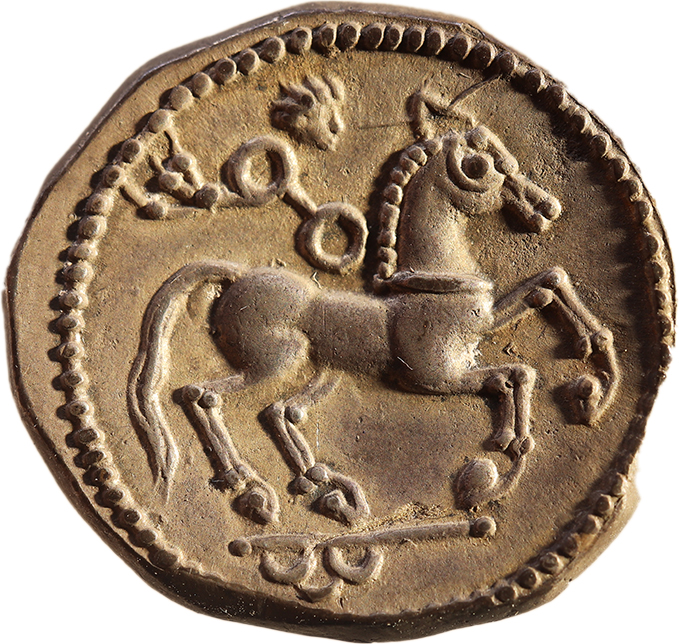Workpackage 3
PI of the workpackage
Solange Rigaud, CNRS researcher, specialized in the mechanisms of cultural evolution - PACEA
Eneko Hiriart, CNRS researcher, specialized in economic and monetary practices - Archeosciences Bordeaux
WP3. How and why do novel cultural traits emerge, propagate and disappear?

This WP aims to change our view of when, where and how many cultural innovations came about, and to document in unprecedented detail their initial occurrence and subsequent evolution in different regions of the planet. We will substantially contribute to the debate on the role of biology vs culture, climate, niche construction, teaching, brain plasticity in the emergence, maintenance and loss of innovations. Our approach is grounded in high quality empirical data, to carry out ambitious research in six different but complementary directions.
Credit Eneko Hiriart
Action 1. The evolution of cultural transmission
Person in charge : Francesco d'Errico
Innovative behaviours are transmitted culturally and can be passed on by relatives, teachers and peers. Studying the emergence of teaching in our lineage entails detecting the tipping points at which members of our lineage complemented pre-existing transmission strategies with those that led our species to develop cumulative culture and eventually “teaching” as we know it. We will refine a dataset of the cultural innovations that have emerged during the history of our lineage and employ multivariate statistical analyses to identify trends in the evolution of teaching strategies.
Action 2. Novel methods for dating the emergence and spread of cultural innovations
Person in charge : Nobert Mercier
New methods will be developed to more precisely date the emergence of Modern Humans in Africa and their arrival in the Near East. This will likely build a new evolutionary time frame for human evolution and Out of Africa dispersal. A methodology based on the coupling of laser sampling and ICP-MS methods will allow the dating with the U-series of a series of bio-materials, not exploited in terms of chronology today. The second methodological development will concern the dating of volcanic quartz crystals coming from East African Middle Stone Age sites. Both techniques will be expanded to other archaeological contexts in the future.
Action 3. The rise and fall of the Acheulean in Africa
Person in charge : Anne Delagnes
The Acheulean represents the fhttps://ausonius.u-bordeaux-montaigne.fr/annuaire?chercheur=178irst technological tradition that involves the production of standardized formal tool types and features a striking longevity (ca. 1.75-1.5 Myr). It is associated with novel biological and cultural traits, including the emergence of Homo erectus and early Homo sapiens, the development of complex toolkits, and the possible emergence of symbolic behavior. We will study archaeological artefacts from key sites located in the Ethiopian rift and Sudan with the aim of better understanding the factors that contributed to the emergence and duration of the earliest and latest stages of this pan-African cultural phenomenon.
Action 4. Bone tool technology
Persons in charge : Francesco d'Errico
Unlike stone tools, the morphological predetermination of which is limited by the constraints imposed by the fracture of isotropic material, the final shape and size of a bone tool, produced with techniques such as grinding, scraping and grooving, may be highly controlled. Bone tools are for this reason particularly appropriate in characterizing technical systems, disentangling style from function, inferring the degree of complexity of a human culture, and identifying tipping points in cultural evolutionary trajectories. We will study Paleolithic bone tools from key sites located Eurasia and Africa with the aim of better understanding long-term trends in the technological and cognitive evolution within our lineage.
Action 5. Network analysis applied to the spread of innovations during the Mesolithic/Neolithic transition in Europe
Person in charge : Solange Rigaud
The degree of interconnectedness of past human populations may have influenced the development, spread and persistence of novel behaviors. We apply to several large-scale cultural and biological datasets landscape connectivity modeling and network-based methods to investigate the variety of cultural interactions that may have existed at the dawn of agriculture in Europe 8 ky ago. We will also test the hypothesis that patterns of continuity/discontinuity in one specific material production mirror population diversity and movements that contribute to the spread of innovations.
Action 6. How did the emergence of cities change human societies?
Person in charge : Natacha Trippé
The emergence of cities marks a tipping point in the history of human societies, which entails a new structuring of the landscape, as well as new ways of conceiving living space, social relationships, and the exploitation of resources. We aim to build on existing and new data to address overarching questions pertaining to the urban phenomenon. We will document the factors that allow a city to be created, grow, and decline. We will also explore the internal and external factors that drove the rise of hierarchical relationships between cities, including communication networks (road, rivers), topography, transport technology, economic and political structures, resource distributions, climate, ecological risk, linguistic diversity, and historic events in the life histories of cities.
Action 7. How “value” emerged within societies?
Person in charge : Eneko Hiriart
Recent studies have shown that monetary systems are not the necessary outcome of the complexification of production economies and the conditions and processes that led to the tipping point of the adoption of monetary and coinage systems is still unknown. We will explore this issue by conducting three related studies: 1) publish novel corpuses of monetary data from various regions; 2) conduct cross-cultural analyses of the emergence of monetary systems around the world in collaboration with experts from other regions; 3) conduct interdisciplinary research concerning the ways value systems are encoded in our brain.


